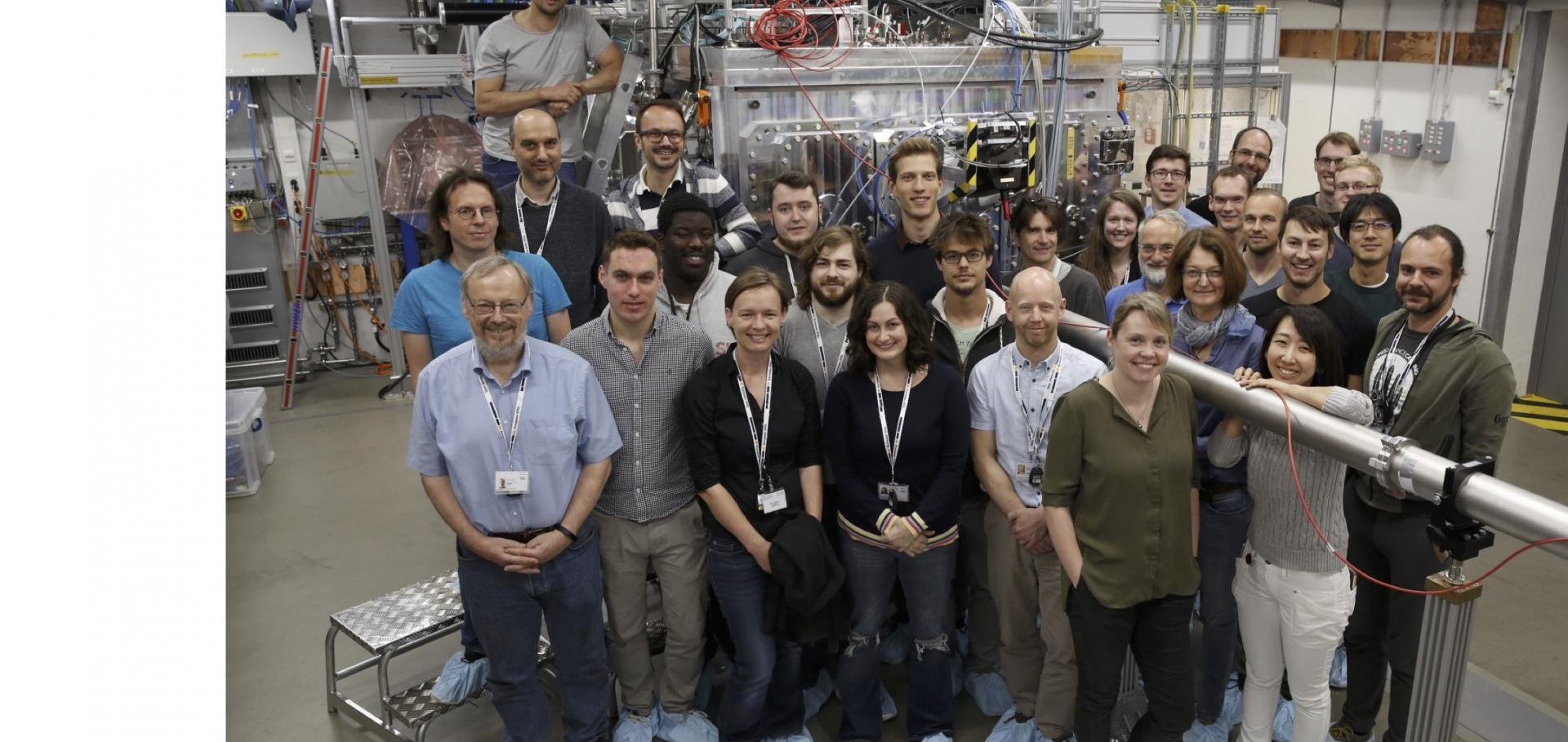Experimental and simulated profiles of the Al XIII Ly-alpha resonance line from a cylindrically expanding plasma
J QUANT SPECTROSC RA 58:4-6 (1997) 835-844
Abstract:
Spectral profiles of optically thick line radiation emitted by an expanding cylindrical laser-produced plasma have been recorded in high resolution using a vertical dispersion variant of the double-crystal spectrometer. By uniformly irradiating a narrow wire with a 1 ns pulse a quasi-steady plasma expansion is generated with a velocity gradient in excess of 10(9) s(-1). Such velocity fields strongly influence the transfer of radiation through a plasma, resulting in a complex distortion of the lineshapes of optically thick lines. We have computed theoretical profiles of the Al XIII Ly-alpha resonance line. Simulation of the laser-plasma interaction is performed using the 1D Lagrangian hydrocode MED103 which incorporates a non-LTE time-dependent excitation and ionisation package based on the average-atom model. Line emission profiles are calculated by the method of multi-frequency line transfer in the co-moving frame. We investigate the sensitivity of the lineshape on plasma parameters such as the velocity profile, comparing our theoretical predictions with experiment. (C) 1997 Published by Elsevier Science Ltd. All rights reserved.Rapid generation of approximate optical spectra of dense cool plasmas
J QUANT SPECTROSC RA 58:4-6 (1997) 619-626
Abstract:
In recent experiments uniform plasmas have been generated at high densities and low temperatures, (typically electron densities of 10(19) cm(-3) and T similar to 2 - 5 eV). Additionally, such plasmas are also produced during free laser ablation - a topic of relevance to the deposition of thin solid films. Standard methods used to diagnose plasmas are difficult to apply at these conditions, as there is significant overlap of the broad spectral lines from different elements and ion stages. It is therefore of interest to attempt to calculate the entire spectrum in the appropriate wavelength regime. For most elements, the number of individual spectral line profiles that have been calculated as a, function of density and temperature using the semi-classical method is very small, hindering such a synthesis of the full spectra. However, a technique for approximating line shapes simply and rapidly (the modified semi-empirical method) has previously been developed for individual lines. We utilise this method, coupled with an accurate database, to generate a large number of density dependent line profiles, and hence an approximation to the full spectrum. We evaluate the accuracy and utility of such an approach by comparison with the few extant semi-classical calculations. The method described facilitates the rapid generation of approximate spectra. It can also be used as a post processor to a hydrodynamic code to obtain both time dependent and time integrated spectra in the approximation that the laser-ablated plasma is both optically thin and in LTE. (C) 1997 Elsevier Science Ltd. All rights reserved.X-ray laser photopumped resonance fluorescence
Journal of Quantitative Spectroscopy and Radiative Transfer Elsevier 58:4-6 (1997) 803-810
Astrophysically relevant experiments on radiation transfer through plasmas with large velocity gradients
PHYS PLASMAS 4:5 (1997) 2004-2010
Abstract:
The transfer of radiation through plasmas with large velocity gradients is of relevance to several astrophysical situations, such as supernova explosions, maser operation, and stellar winds. Similar conditions often prevail in laser-produced plasmas, with velocity gradients of order 10(9) s(-1) significantly altering the effective optical depth and line shape. Some of the simplest cases to study experimentally are the hydrogenic resonance lines. Experiments performed in both planar and cylindrical geometry, comparing the observed line profiles with those modeled using a one-dimensional Lagrangian hydrocode, incorporating average-atom nonlocal thermodynamic equilibrium (non-LTE) atomic physics are described. The opacity effects on the ion populations an treated within the escape factor approximation, taking into account the effects of the velocity gradient. The hydrocode gives time- and space-dependent values of the electron and ion densities, excited state fractions, electron and ion temperatures, and velocities, The hydrodynamic output is post-processed with a radiative transfer routine to construct the simulated line shape. Details of the experiments and results are presented, and relevance to the astrophysical situations discussed. (C) 1997 American Institute of Physics.Measurements of direct drive laser imprint in thin foils by radiography using an x-ray laser backlighter
PHYS PLASMAS 4:5 (1997) 1985-1993


